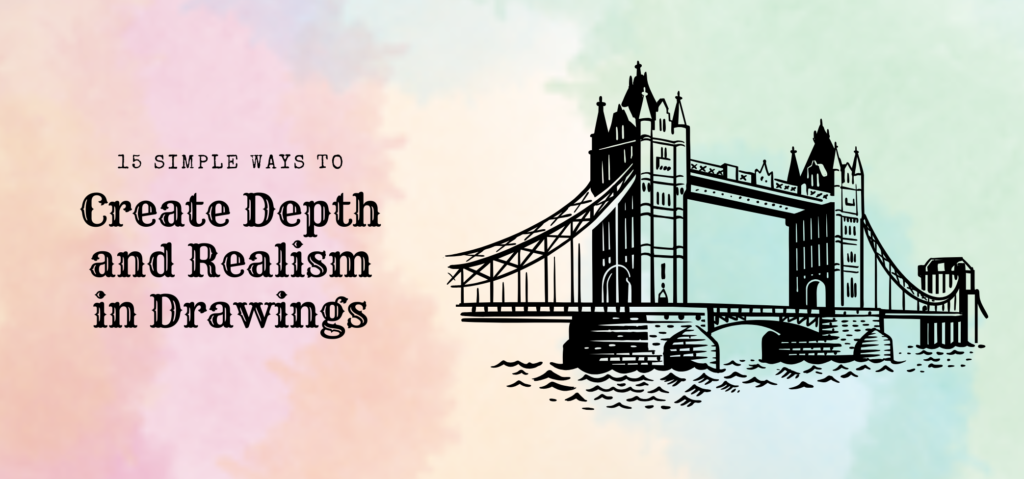Creating realistic drawings isn’t just about capturing details – it’s also about making a flat surface feel three-dimensional. Artists often rely on direct observation or reference images to achieve accuracy. However, when starting with a rough sketch or drawing purely from imagination, certain techniques can help bring depth and dimension to the artwork.
From adjusting perspective to manipulating shading, these methods can turn a simple drawing into a lifelike masterpiece. Whether you’re using traditional techniques or exploring photo to sketch conversion for guidance, mastering depth is key to creating visually compelling art.
1. Creating Volume
Unlike flat shapes, three-dimensional objects have depth, making them appear more realistic. The key to achieving this effect is understanding how light interacts with the object. Depending on the light source, some areas will be highlighted while others fall into shadow. By carefully shading and blending tones, artists can create the illusion of volume, making objects look more lifelike on a flat surface.
Example:
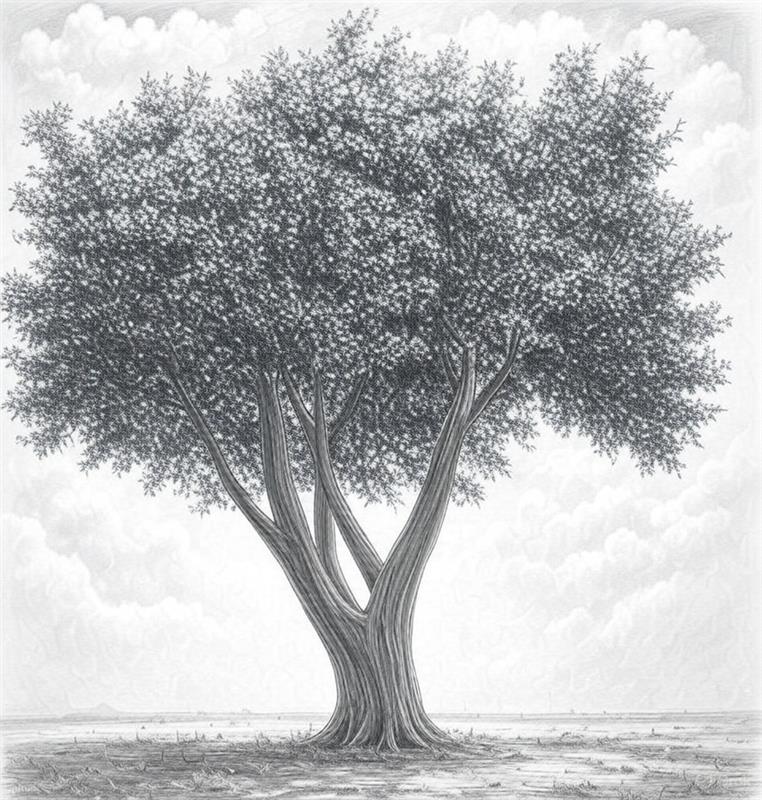
Tip: When using reference images, choose ones with strong contrast between light and dark areas. This helps enhance depth, making your sketches more striking and realistic.
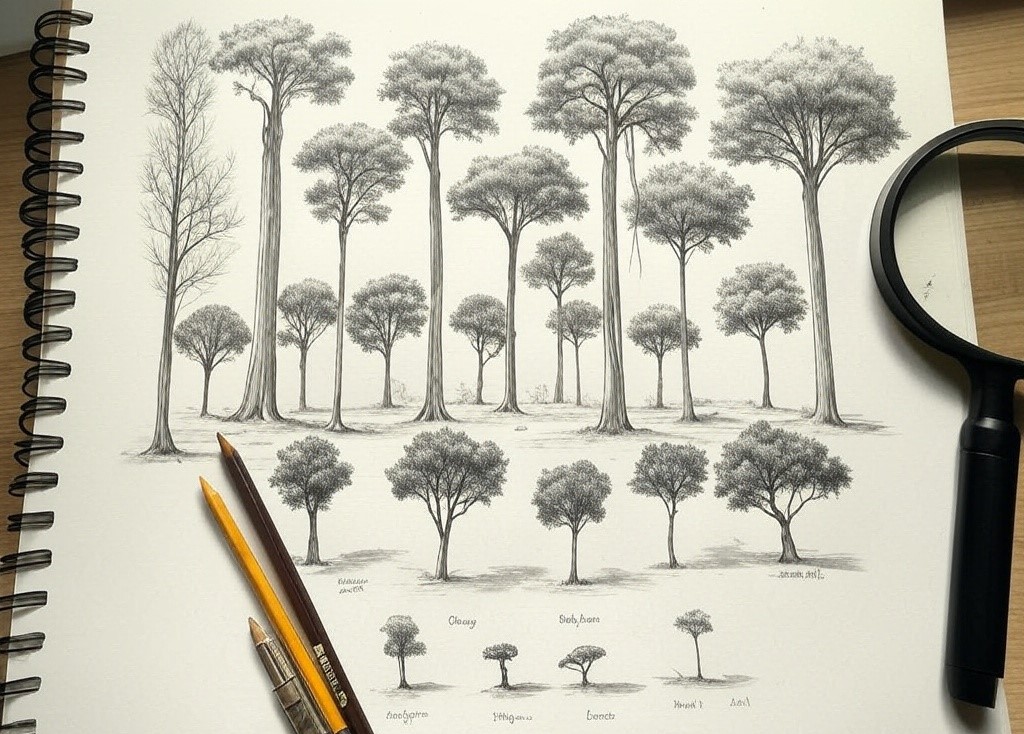
2. Adjusting Size for Depth
Perspective is key to creating depth in drawings.
✯ Objects farther away appear smaller, while closer ones look larger.
✯ Drawing similar objects in different sizes helps create a sense of distance.
This technique guides the viewer’s eye and enhances realism.It makes a flat image feel more immersive and lifelike.
Example:
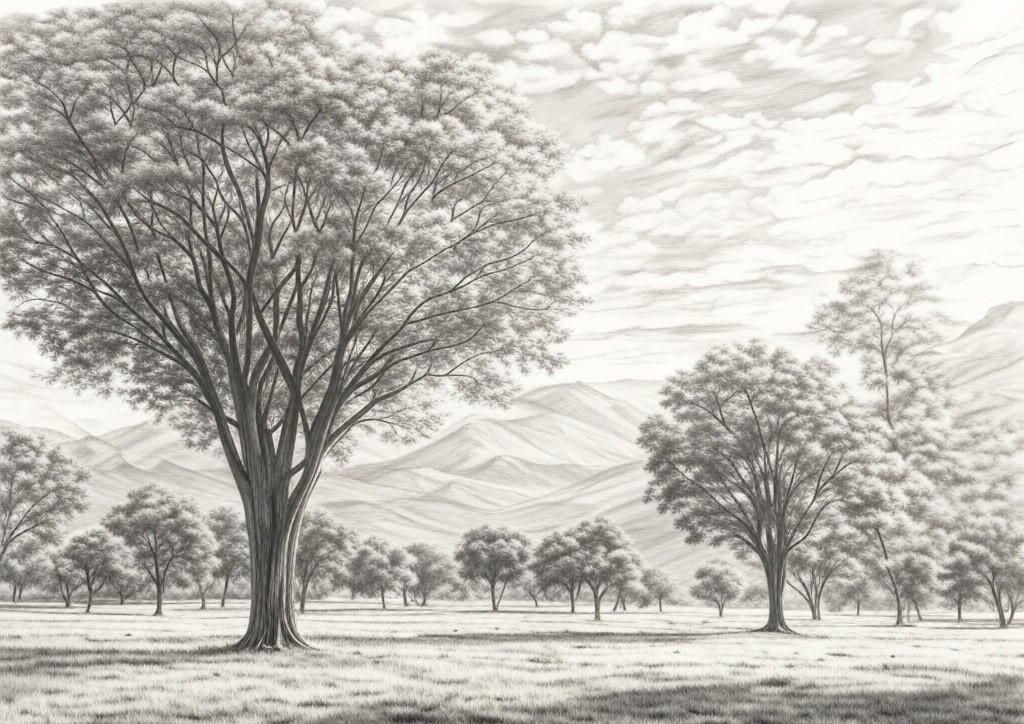
✯ Size manipulation helps establish spatial relationships within a composition.
✯ Placing a smaller object within a defined space creates the illusion of a vast environment.
✯ This technique is commonly used in landscape drawings and architectural sketches to emphasize scale and proportion.
✯ Grid drawing helps artists maintain accuracy while adjusting object sizes for better depth perception.
✯ Mastering size variation enhances realism and adds a dynamic, immersive quality to artwork.
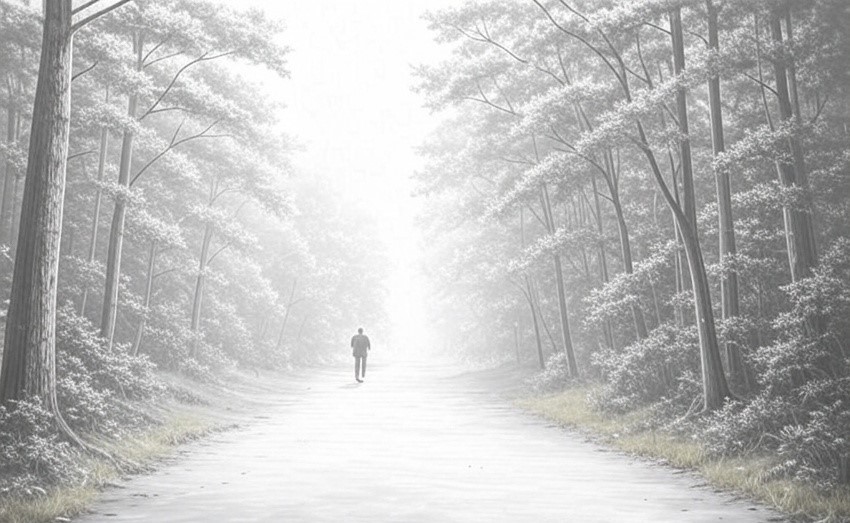
Similarly, placing a large object within the same space can make the surrounding area appear smaller.

3. Overlapping for Depth
One of the simplest ways to create depth in a drawing is through overlapping. When one object partially covers another, it signals that the hidden object is positioned farther back. This layering effect helps establish spatial relationships, making a flat image feel more three-dimensional and realistic.
Overlapping is a simple yet powerful technique for creating depth in drawings. This method adds realism and makes compositions feel more dynamic and layered.
Example:
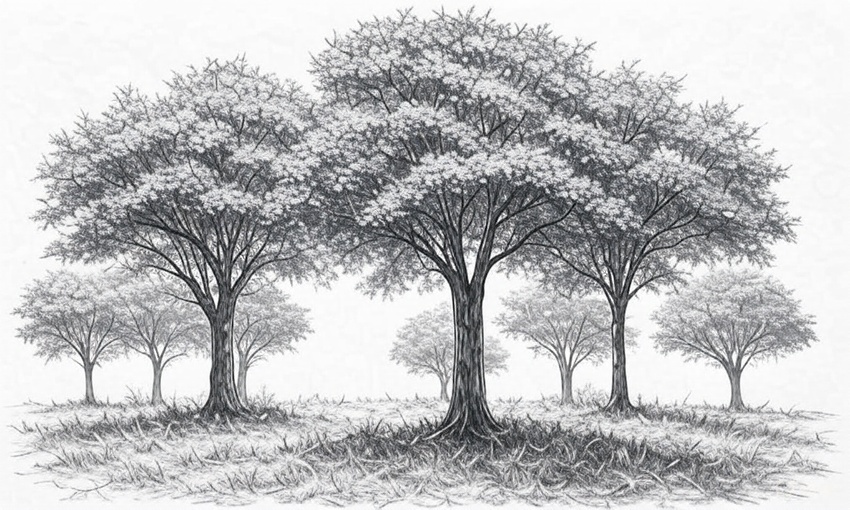
4. Position and Height for Depth
The placement of objects within a drawing significantly affects the perception of depth. When an object’s base is positioned higher on the drawing surface, it naturally appears farther away. This technique, often used in landscapes and perspective drawing, helps create a clear sense of distance and spatial arrangement.
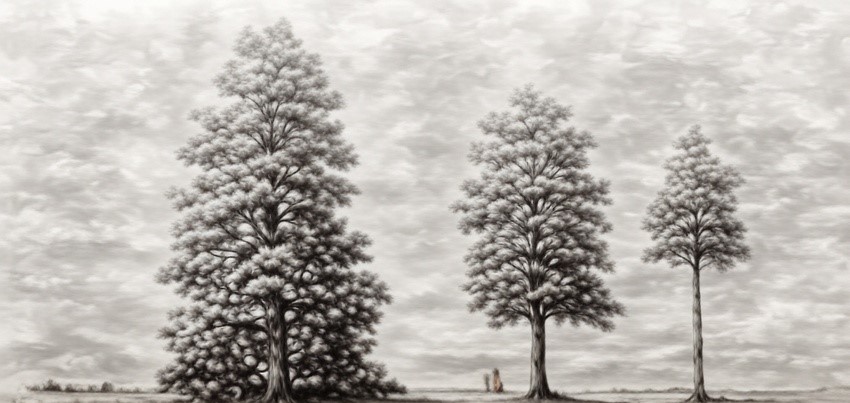
In most cases, objects that are closer will have their base positioned lower on the drawing surface, while their top parts appear higher compared to those farther away. This perspective effect enhances depth, making the scene feel more realistic.
Note: This technique is most effective when the horizon line is placed in the middle of the composition, ensuring a balanced and natural perspective.
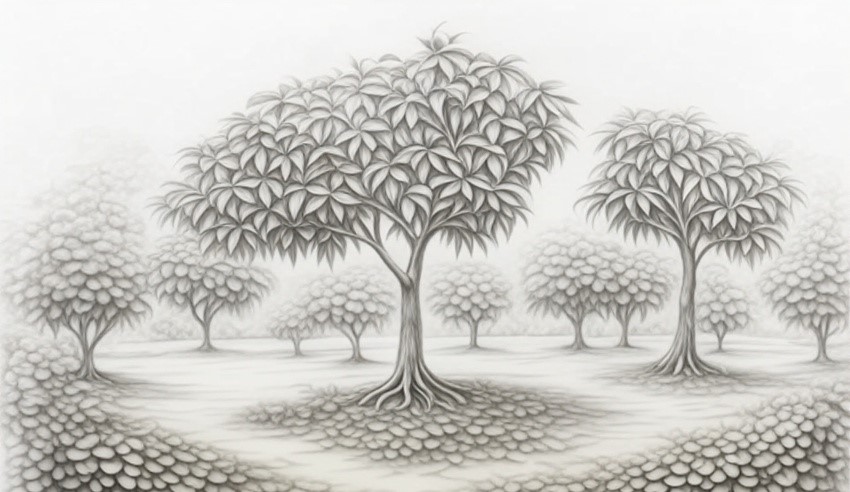
This effect is due to the way our vision works. Our eyes perceive the world through a cone of vision, meaning that distant objects take up a smaller portion of our field of view.
As a result, our brain interprets them as being smaller and positioned higher in the composition. Understanding this optical principle helps artists create more realistic depth and perspective in their drawings.
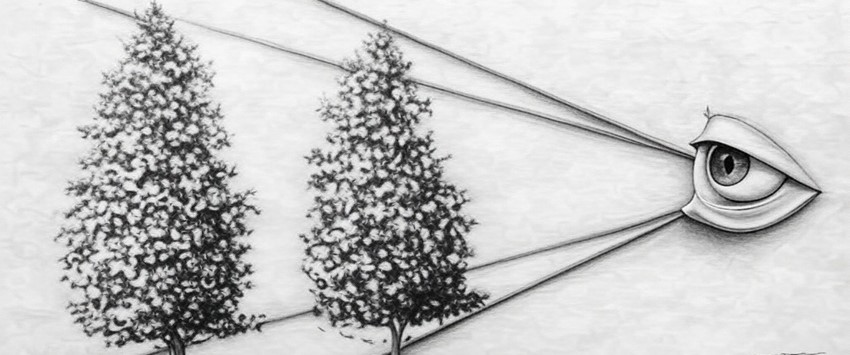
Remember:
There is no actual depth in a drawing; the paper sheet is flat. Therefore, use height to determine the illusion of depth.
Example:

5. Contrast and Details for Depth
As objects recede into the distance, their contrast and level of detail gradually decrease. Dark and light areas become less distinct, and fine details fade, making distant objects appear softer and less defined. This natural effect, often seen in atmospheric perspective, helps create a realistic sense of depth and distance in drawings.
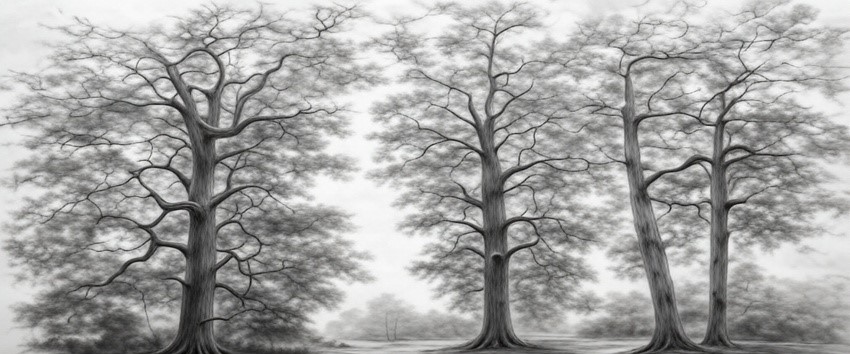
This means that in a drawing or painting, areas with high contrast appear closer to the viewer, while areas with less contrast seem to recede into the background. By controlling contrast, artists can guide the viewer’s focus and enhance the illusion of depth in their compositions.
6. Using Edges to Create Depth
Edges play a crucial role in defining depth within a drawing. Hard edges, where an object ends abruptly, indicate a sharp, well-defined surface, making it appear closer. Soft edges, where transitions are gradual from dark to light, create a sense of distance or a smooth, blended effect. Mastering the balance between these edges helps add realism and depth to your artwork.
✯ Hard objects have sharp edges, making them appear solid and well-defined.
✯ Soft objects like hair, fur, and fabric have gradual transitions and softer edges.
✯ Cast shadows often have blurred edges, adding depth and realism.
✯ Balancing hard and soft edges creates a more lifelike composition.
✯ Foreground objects usually have hard edges, making them appear sharp and in focus.
✯ Paying attention to edges is essential for achieving realism in drawings and paintings.
On the other hand, background objects have soft edges, giving them a blurred effect that enhances the sense of depth and distance. Using this technique effectively helps create a more natural and visually engaging composition.
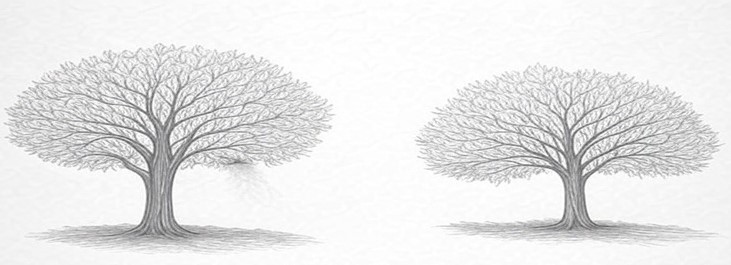
This effect occurs due to atmospheric perspective. As objects move farther away, more air particles come between the observer and the object. These particles scatter light, making distant objects appear blurry, less detailed, and lower in contrast.
Artists can use this principle creatively, much like a camera lens, to enhance depth even between objects that are relatively close. By intentionally blurring certain elements, you can draw attention to the focal point and create a more immersive composition.
Example:

7. The Role of the Horizon in Depth
Including a horizon line in your drawing – whether through a mountain range, vegetation, or simply a visible divide between ground and sky – helps establish depth and structure. It creates a sense of space, making distant objects feel naturally positioned.
Additionally, adding a ground surface prevents objects from appearing as if they are floating or hovering in space. This simple technique anchors elements within the scene, making the composition feel more grounded and realistic.
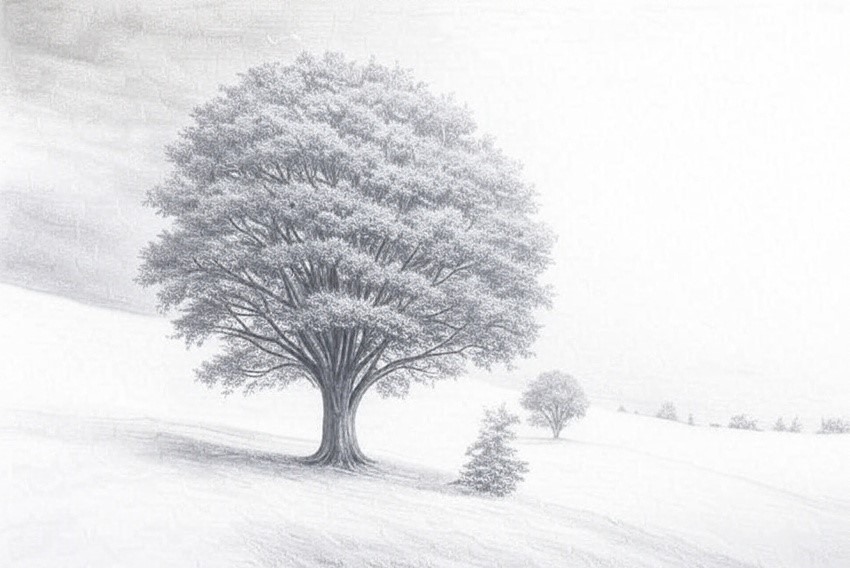
Keep This in Mind:
Your drawing surface is flat-it has only width and height, not actual depth.
Objects placed closer to the horizon naturally appear farther away, enhancing the illusion of depth in your artwork.
8. Perspective
Linear perspective helps create a realistic sense of depth by making objects appear smaller as they move farther away. Using perspective lines can guide the viewer’s eye and add structure to your drawing.
Example:
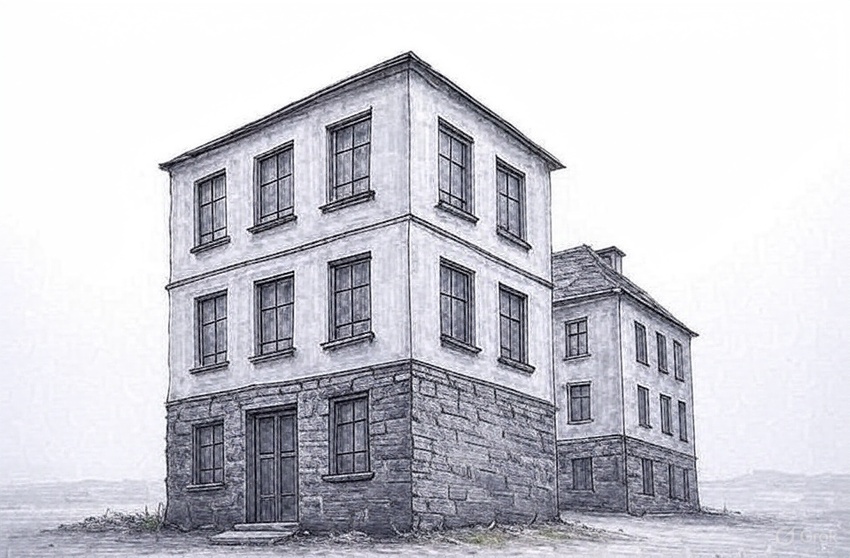
9. Foreshortening
When objects are directly in front of the viewer, they appear smaller as they recede but maintain their proportions without distortion.
✯ When viewed from a different angle, objects appear compressed in length.
✯ This effect is called foreshortening and mimics how objects change shape based on perspective.
✯ Foreshortening adds realism by creating a sense of depth.
✯ The distortion occurs due to the angle of sight.
✯ The more an object aligns with your line of vision, the more it appears shortened.
For example, a circular lake may look elliptical as it stretches into the distance, creating a natural perspective effect.
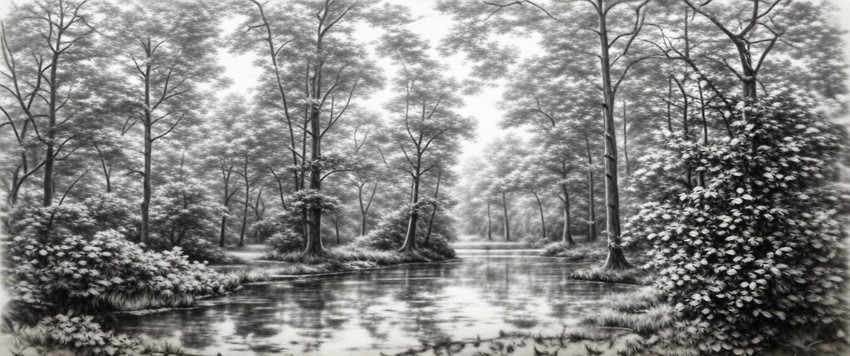
Mastering foreshortening is a major advantage for experienced artists, especially when creating drawings from imagination. It adds realism and depth, making objects appear naturally positioned in space.
10. Colors
From An atmospheric perspective, distant objects gradually take on the color of the background-usually a bluish tint from the sky. This effect helps create depth, making objects appear farther away.

11. Saturation
As objects move farther away, their colors become less saturated-losing intensity and appearing more muted or neutral. This subtle shift enhances the sense of depth in a drawing.
Example:
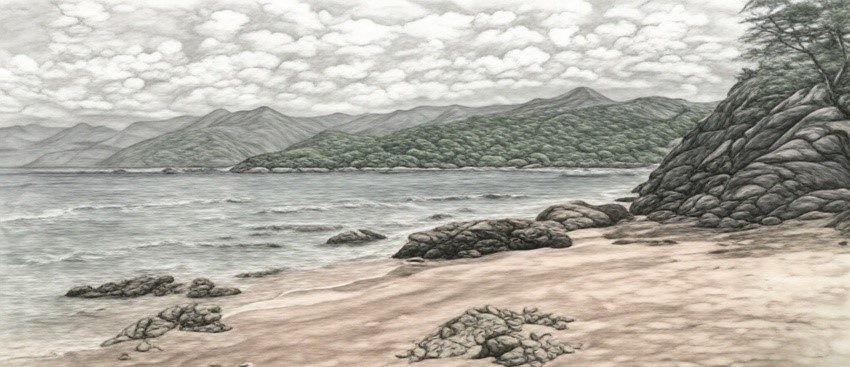
12. Temperature
Colors impact depth-cool colors (blue, green, purple) suggest distance, while warm colors (red, orange, yellow) feel closer.
Due to atmospheric perspective, background objects shift toward a cooler (bluer) hue, especially under a blue sky.
Meanwhile, foreground objects appear warmer, as fewer atmospheric particles affect their color. This effect can reverse at sunrise or sunset when warm tones dominate the sky.
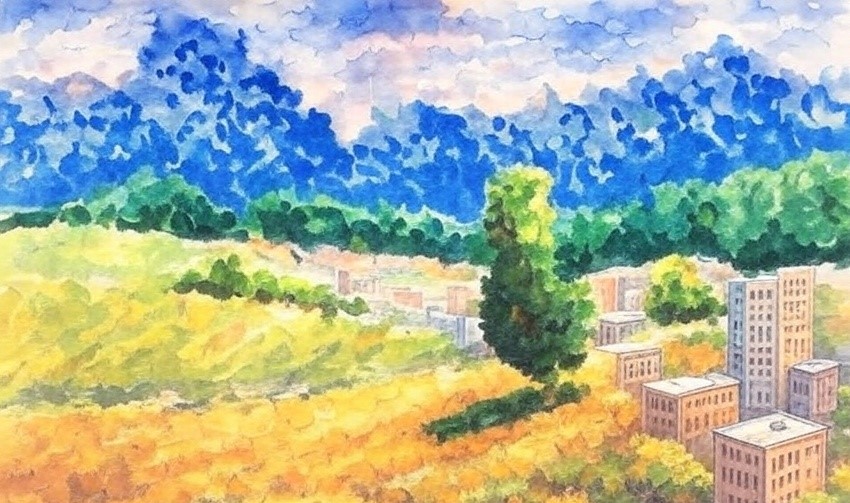
13. Values
From An atmospheric perspective, distant objects appear lighter because their brightness values increase. This softens contrasts and enhances the illusion of depth in a drawing.
✯ In monochromatic drawings, distant objects appear lighter, while darker values in the foreground add contrast and depth.
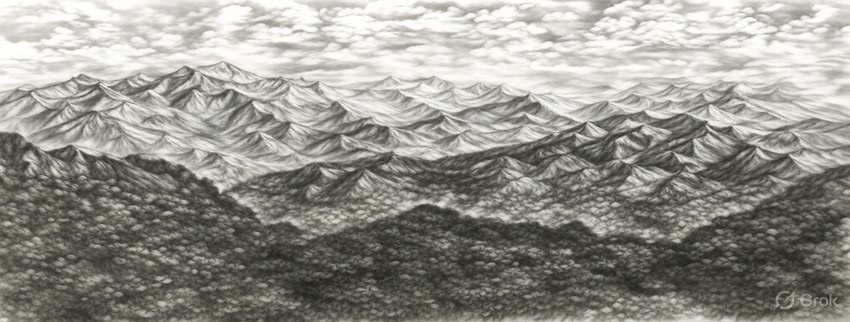
Additionally, using gradual transitions in brightness values-smooth shading or gradients-can enhance the illusion of depth, making objects appear more three-dimensional.
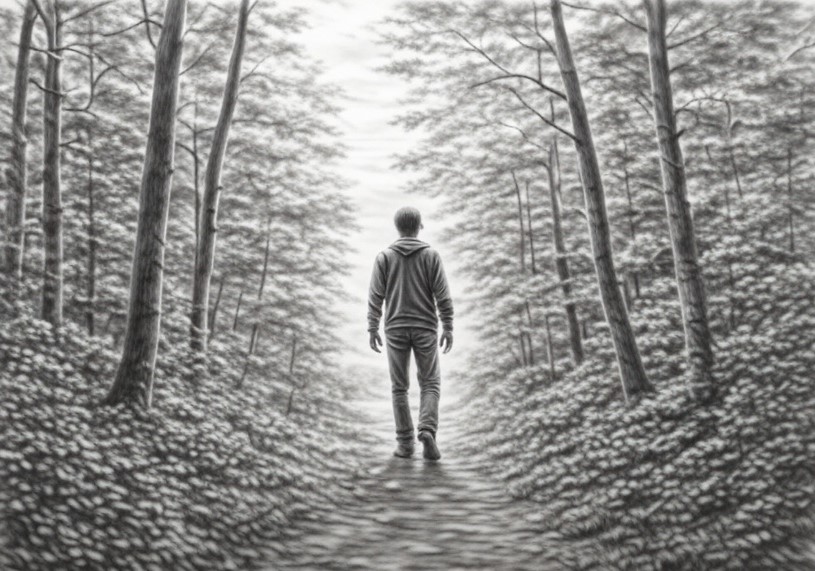
A smooth transition from dark to light
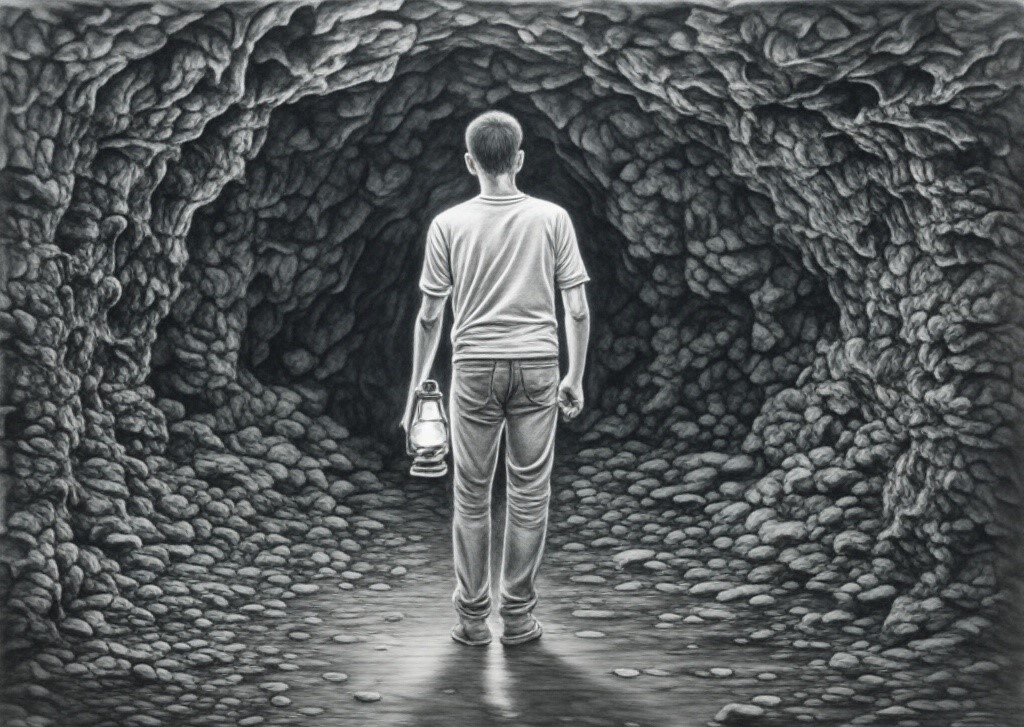
A smooth transition from light to dark
14. Cast Shadows
Adding cast shadows enhances realism and depth. Always place shadows opposite the light source, ensuring they follow the form and perspective of the objects.
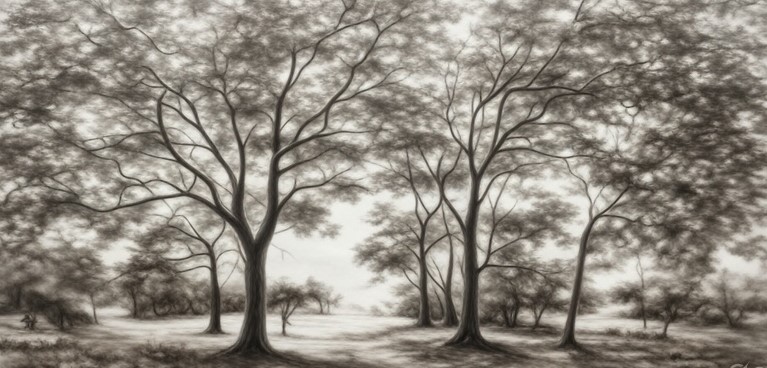
Remember:
Cast shadows typically have soft edges, especially as they extend farther from the object, reinforcing the illusion of depth.
15. Brushstrokes and Marks
In painting styles that use individual brushstrokes, like for grass or leaves, larger brushes create bold foreground details, while smaller brushes add subtle background elements.
The same applies to technical pens-use bigger nibs for foreground details and finer nibs for background objects to enhance depth.
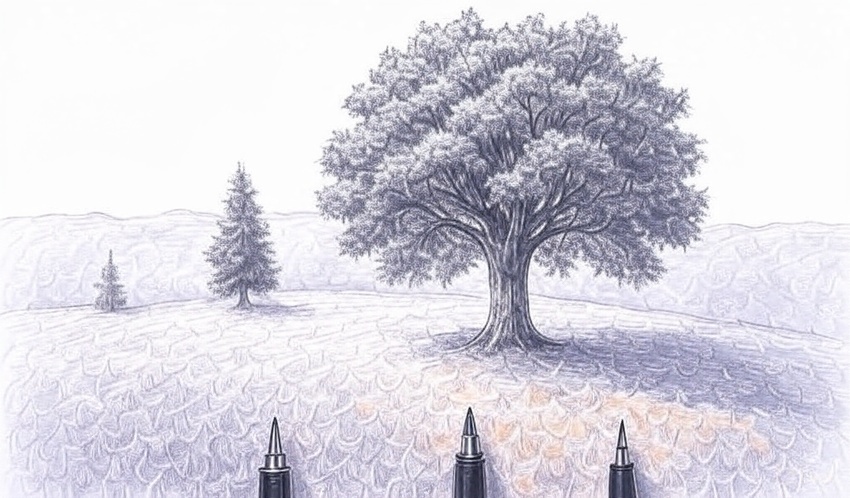
Line Direction Matters
In an initial sketch, the direction of lines, marks, or brushstrokes plays a key role. The same shape can convey different emotions or depth depending on how the marks are placed.
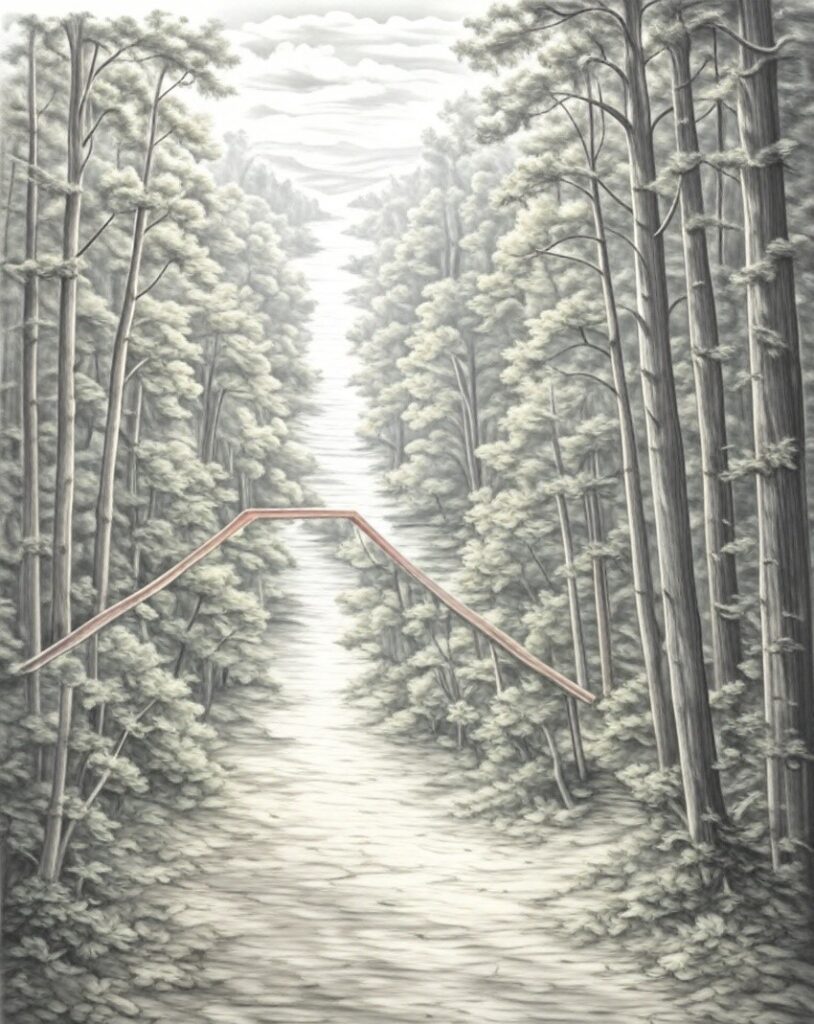
Marks Define Your Painting
When planning a painting, the direction of marks is crucial. They help guide the viewer’s eye and add depth, making them essential in the painting process.
Example:
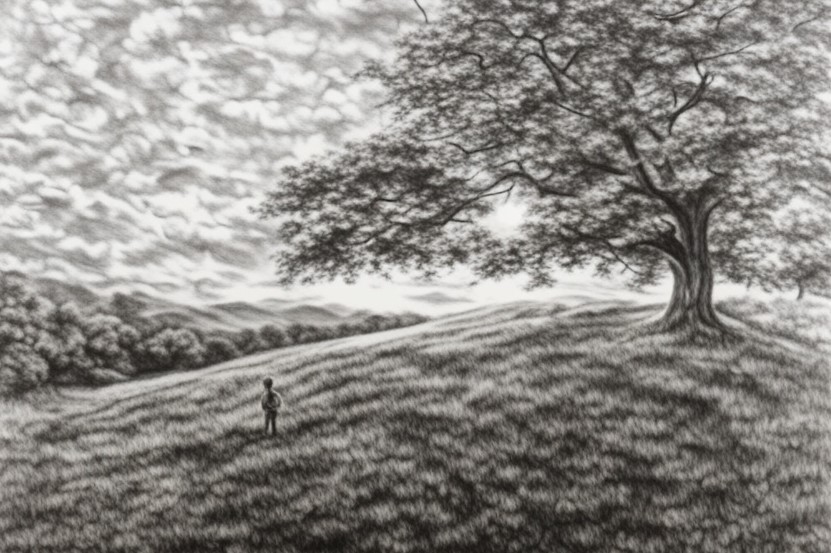
Bonus Tip: Composition for Depth
A well-planned composition makes a drawing more engaging.
Avoid front or side views, as they often look flat. Instead, a three-quarter view adds depth and makes the artwork more dynamic.

Bringing Depth to Your Artwork
Creating depth in drawing is all about mastering techniques that turn a flat surface into a three-dimensional scene. Since real depth doesn’t exist in drawings, artists rely on the illusion of depth to bring their work to life.
When working with colors, focus on hue, saturation, value, and temperature, as these elements play a key role in depth perception. In monochromatic drawings, adjusting brightness values is essential to create a realistic effect.
For landscapes, understanding linear and atmospheric perspective helps convey distance. In still life, using contrast, overlapping, and edges enhances the sense of dimension. Master these techniques, and your artwork will instantly feel more realistic!

